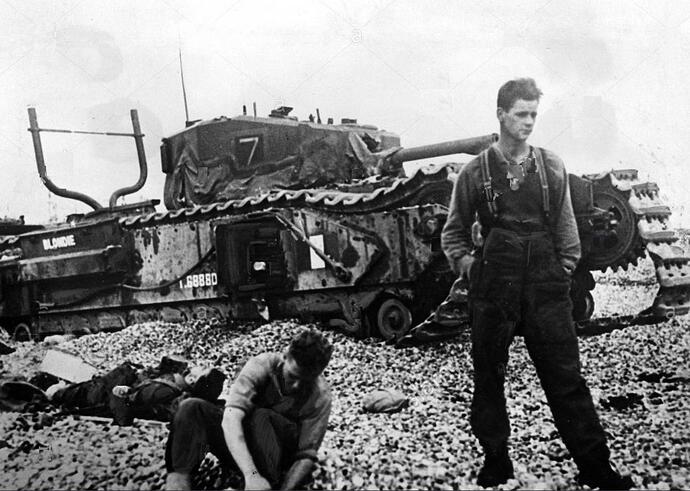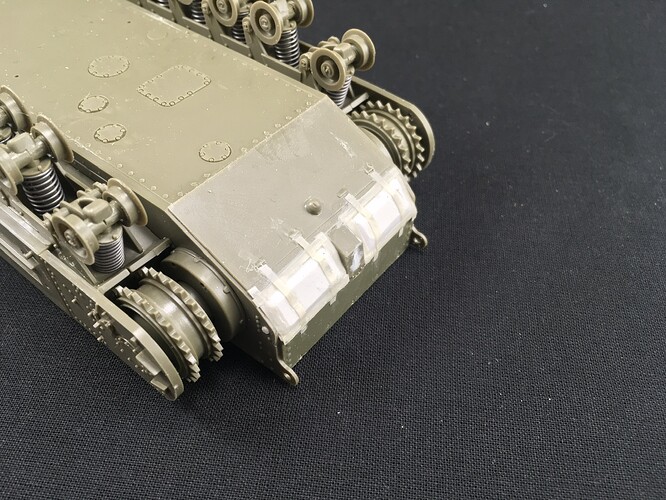The deep-wading gear was released as soon as the tank got safely ashore. To get rid of the inlet and exhaust ducts, the commander had a handle with a bicycle brake lever on it, attached to a Bowden cable that ran to the fixture in the centre of the engine deck that held the rods which connected to the ducts. Pulling the lever pulled a plunger out of the device, releasing a spring-loaded locking plate, which in turn released the rods holding the ducts, which then just dropped off the tank. Still with me? ![]()
The extended engine exhausts, though, bolted onto the square flanges on the ends of the normal exhausts, and so would stay on the tank until removed later by hand. This is obvious from photographs:
However, a Churchill prepared for deep wading would have more than just those ducts and extended exhaust pipes on it, but pretty much everybody modelling one, misses that. Take a look at the photo above ![]()
Waterproof fabric was applied around the turret, to seal both it to the hull and cover the pistol ports, and similar fabric went over the bow machine gun and the ventilator on the front hull roof. Waterproofing tape and compound (of which a major constituent, incidentally, was asbestos) was also used on all of the hull hatches and vision devices, and the lower exhaust on the hull rear was sealed with two sheet steel plates, either side of the towing hook.
The fabric and the sheet steel plates had detonating cord under them, fitted with an electrical detonator on a lead that went into the tank and either connected to the lighting system or with a plug for putting into a socket in the tank; these were all to be taped over to prevent accidental operation. Once ashore, the commander would first drop the ducts as I mentioned, and then the electrics were operated to blow the fabric and metal panels off the tank.
Anyway, on a model, all of that looks like this:
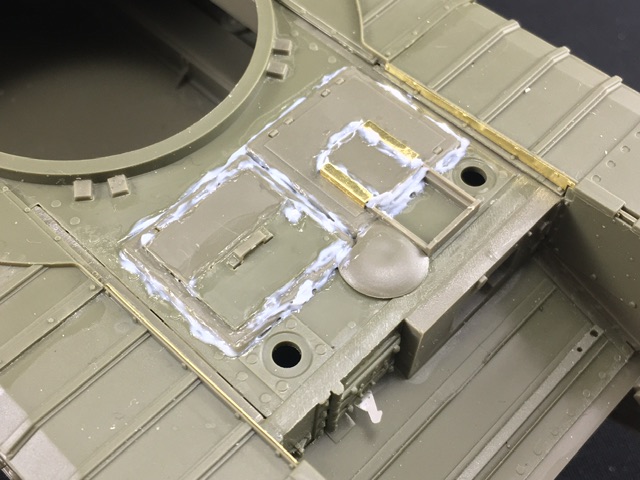
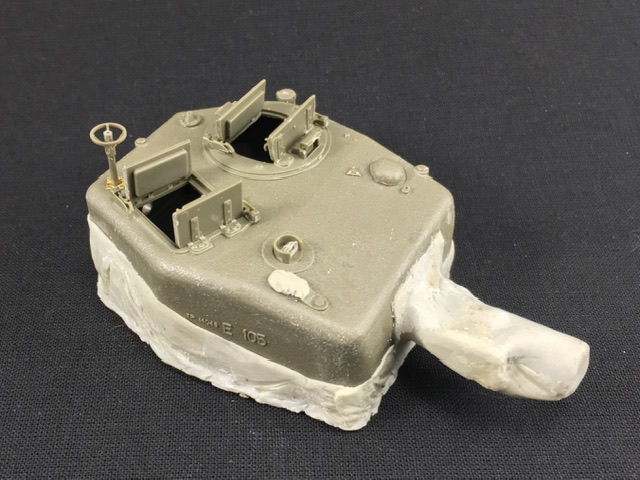
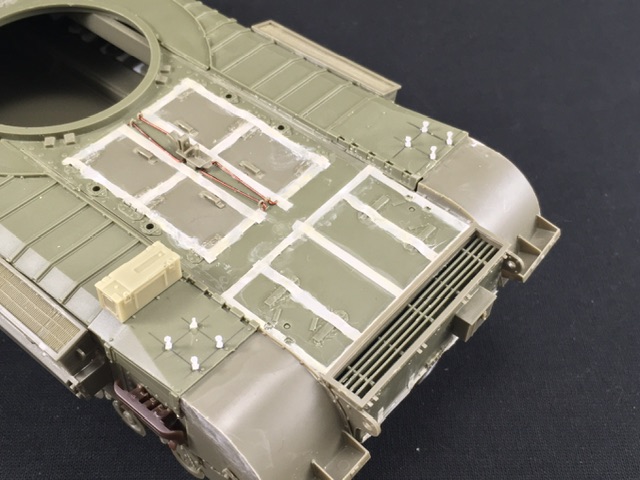
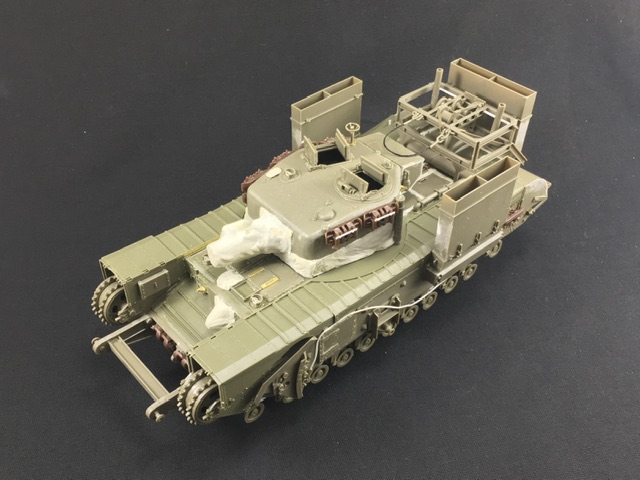
(Though I admit the cover over the spigot mortar here is conjecture, as I didn’t have the waterproofing manual for the AVRE, only for the regular Churchill tanks.)
If you want to portray the tank after landing, you would need to add the waterproofing tape and compound but not the fabric, though some shreds of that will add interest. Also, the stuff that the fabric was glued down with will leave visible black lines on the tank all along the edges of where the fabric was, including very prominently along the sides of the turret.
